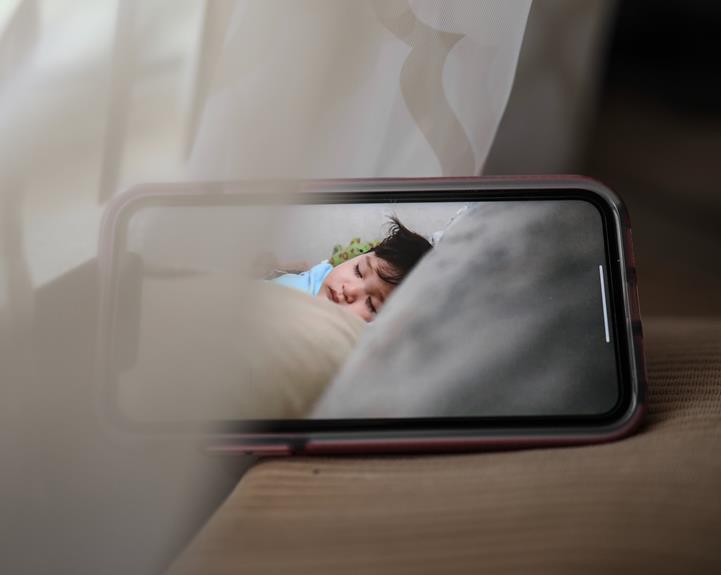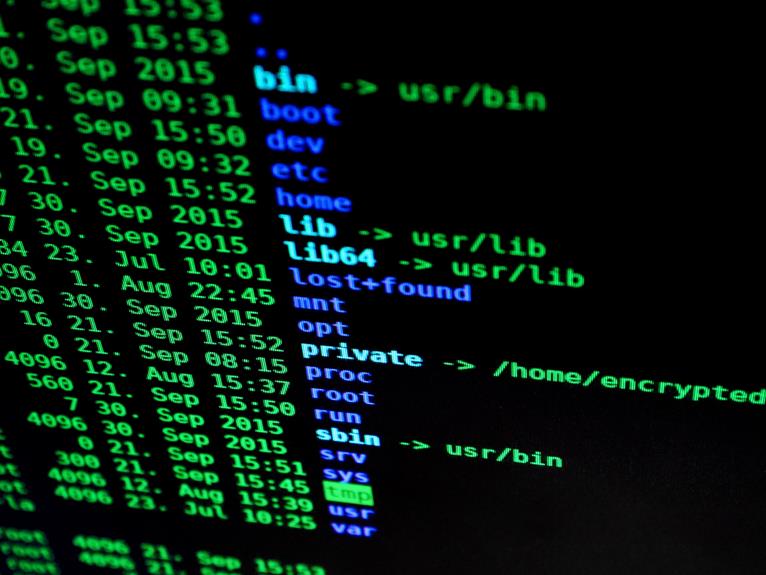When Were Baby Monitors Invented

The invention of baby monitors has revolutionized the way parents keep an eye on their little ones, providing peace of mind and convenience. But have you ever wondered when this ingenious device was first introduced?
The history of baby monitors is a fascinating journey that dates back several decades, with various iterations and advancements along the way. From the earliest beginnings to the cutting-edge technology of today, we will explore the evolution of baby monitors and uncover the remarkable innovations that have shaped this essential parenting tool.
So, join us as we embark on a captivating exploration of when baby monitors were first invented and how they have transformed over time.
Early Beginnings of Baby Monitors
The early beginnings of baby monitors can be traced back to the early 20th century when the first devices were developed to help parents monitor their infants remotely.
In 1937, Eugene F. McDonald Jr., the founder of Zenith Radio Corporation, introduced the 'Radio Nurse' baby monitor. This innovative device consisted of a microphone placed near the baby's crib and a receiver unit that allowed parents to listen to their baby's sounds from another room. The Radio Nurse was a significant breakthrough, providing parents with the freedom to monitor their child's well-being while attending to other household tasks.
However, it wasn't until the 1980s that baby monitors became more widely available and affordable to the general public. With advancements in technology and the advent of wireless communication, manufacturers started producing more sophisticated baby monitors. These newer models incorporated video monitors, allowing parents to not only hear but also see their baby from a distance. This added visual element provided an extra layer of reassurance to parents, enabling them to monitor their baby's movements and sleep patterns.
The early development of baby monitors marked a significant shift in parenting practices, granting parents the freedom to be in separate rooms from their infants while still keeping a close eye on them. This newfound freedom allowed parents to multitask, attend to household chores, or even rest while ensuring their baby's safety and well-being.
The First Electric Baby Monitor
The first electric baby monitor marked a significant milestone in the evolution of monitoring devices for infants.
Prior to its invention, parents relied on simple audio devices and intercom systems to keep tabs on their children.
However, the introduction of the electric baby monitor revolutionized the way parents could monitor their babies, providing them with the ability to hear and even see their child from a distance.
This technological advancement paved the way for further innovations in baby monitoring systems.
Invention of Baby Monitor
Throughout history, advancements in technology have paved the way for numerous innovations, and one such invention that revolutionized parenting was the electric baby monitor.
Here are four key points about the invention of the baby monitor:
- Invention: The first electric baby monitor was invented in the late 1930s by Eugene F. McDonald Jr., the founder of Zenith Radio Corporation. It was initially called the 'Radio Nurse' and consisted of a microphone placed near the baby and a receiver with a loudspeaker for the parent to carry around.
- Purpose: The invention aimed to provide parents with a convenient way to monitor their infants while they were in another room. It allowed parents to keep an ear on their baby's sounds and movements, providing a sense of security and peace of mind.
- Evolution: Over the years, baby monitors have evolved significantly. From being simple audio devices, they now come with video capabilities, night vision, temperature monitoring, two-way communication, and even smartphone connectivity.
- Impact: The invention of the electric baby monitor revolutionized parenting by enabling parents to multitask and have more freedom while still being able to monitor their baby's well-being. It has become an essential tool for modern parents, offering convenience and reassurance.
The invention of the electric baby monitor has undoubtedly transformed the way parents care for their infants, enhancing safety and providing peace of mind.
Early Monitoring Devices
The invention of the first electric baby monitor in the late 1930s by Eugene F. McDonald Jr. offered parents a convenient means of monitoring their infants while they were in another room. This early monitoring device, known as the 'Radio Nurse,' consisted of a microphone placed near the baby and a speaker in the parent's room.
The microphone picked up sounds made by the baby and transmitted them wirelessly to the speaker, allowing parents to hear their baby from a distance. The Radio Nurse revolutionized childcare by providing parents with the freedom to move about the house while keeping tabs on their little ones.
This groundbreaking invention laid the foundation for future advancements in baby monitoring technology, ultimately leading to the modern-day baby monitors that we use today.
Evolution of Baby Monitors
The invention of the first electric baby monitor in the late 1930s by Eugene F. McDonald Jr. marked a significant milestone in the evolution of baby monitoring technology. This innovative device revolutionized the way parents could monitor their infants, providing them with a sense of security and freedom. The development of the first electric baby monitor paved the way for further advancements in the field, leading to the creation of more sophisticated and technologically advanced monitors.
- Wireless Communication: The first electric baby monitor utilized wireless technology, allowing parents to monitor their babies from different rooms in the house.
- Audio Monitoring: The initial baby monitor focused on transmitting audio signals, enabling parents to listen to their baby's sounds and cries remotely.
- Range Extension: Over time, baby monitors were designed with increased range capabilities, allowing parents to monitor their infants from even greater distances.
- Additional Features: Modern baby monitors now include features such as video monitoring, temperature sensors, and night vision, providing parents with a comprehensive view of their baby's well-being.
The evolution of baby monitors continues to progress, providing parents with greater peace of mind and convenience in caring for their infants.
Advancements in Audio Technology
With the rapid evolution of technology, significant advancements have been made in the field of audio technology, revolutionizing the way we communicate and enhancing our listening experiences. These advancements have led to the development of various audio devices that cater to our diverse needs and preferences.
One notable advancement is the introduction of wireless headphones, which have provided us with the freedom to move around while enjoying our favorite music or podcasts. These headphones utilize Bluetooth technology to connect wirelessly to our devices, eliminating the hassle of tangled wires and allowing us to enjoy audio content with ease.
Another significant development is the improvement in sound quality in audio devices. Through the use of advanced sound engineering techniques and the incorporation of high-quality audio components, manufacturers have been able to deliver clearer, richer, and more immersive sound experiences.
Furthermore, advancements in audio technology have also resulted in the creation of smart speakers, which are equipped with virtual assistants like Amazon Alexa or Google Assistant. These devices not only play music but also respond to voice commands, making it easier to control various aspects of our smart homes.
Below is a table showcasing some of the notable advancements in audio technology:
| Advancements | Description |
|---|---|
| Wireless Headphones | Allows freedom of movement while enjoying audio content |
| Improved Sound Quality | Provides clearer, richer, and more immersive sound experiences |
| Smart Speakers | Equipped with virtual assistants for voice control and home automation |
Introduction of Video Baby Monitors
The introduction of video baby monitors marked a significant evolution in the field of baby monitoring technology. These devices not only allowed parents to hear their baby's sounds but also provided them with visual reassurance, enhancing their peace of mind.
With the ability to see their child in real-time, parents could monitor their baby's movements and check on their well-being without having to physically enter the room.
Evolution of Baby Monitors
Video baby monitors revolutionized the way parents could remotely monitor their infants by providing them with a visual feed of their child's activities. These advanced devices have undergone significant evolution over the years, catering to the ever-changing needs of parents.
Here are four notable changes that have shaped the evolution of baby monitors:
- Introduction of Two-Way Communication: Modern video baby monitors now allow parents to communicate with their child through built-in microphones and speakers, providing a sense of security and reassurance.
- Integration with Smart Home Technology: Baby monitors have embraced the era of smart homes, allowing parents to control and monitor their child's environment through mobile apps or voice assistants.
- Enhanced Video Quality: The introduction of high-definition video technology has enabled parents to observe their baby with crystal-clear clarity, even in low-light conditions.
- Wireless and Portable Designs: Baby monitors have become more compact, lightweight, and wireless, allowing parents to easily move them around the house or even take them on trips.
These advancements in video baby monitors have empowered parents with greater flexibility, convenience, and peace of mind, ensuring the safety and well-being of their little ones.
Enhancing Parental Peace
As technology continued to evolve, baby monitors progressed from simple audio devices to sophisticated video monitors that facilitated the continuous remote observation of infants. The introduction of video baby monitors revolutionized the way parents could monitor their babies, providing them with a greater sense of peace and security. These advanced devices not only allowed parents to hear their baby's sounds but also provided a visual feed, enabling them to see their child in real-time. This visual aspect of video baby monitors enhanced parental peace by offering a more comprehensive understanding of their baby's well-being. With the ability to observe their child's movements, facial expressions, and sleep patterns, parents gained a deeper insight into their baby's needs and could respond more effectively. The table below highlights the key features that video baby monitors bring, further enhancing parental peace.
| Features | Description | Benefits |
|---|---|---|
| Real-time video feed | Provides a continuous live stream of the baby's activities, allowing parents to monitor remotely. | Peace of mind knowing the baby's well-being is constantly monitored. |
| Two-way audio | Enables communication between parents and the baby, providing reassurance and comfort. | Allows parents to soothe their baby or speak to them when necessary, even from a distance. |
| Night vision | Infrared technology ensures clear visibility even in low-light or dark conditions. | Allows parents to monitor their baby at night without disturbing their sleep. |
| Multiple camera support | Allows parents to monitor multiple areas of the nursery or multiple children simultaneously. | Provides flexibility and convenience for parents with multiple children or larger spaces. |
| Mobile app integration | Enables parents to monitor their baby's activities from their smartphones or tablets. | Offers convenience and flexibility, allowing parents to monitor their baby on the go. |
Visual Reassurance for Parents
With the advancement of technology, parents gained a new level of reassurance with the introduction of video baby monitors. These devices revolutionized the way parents could keep an eye on their sleeping infants.
Here are four ways video baby monitors have provided visual reassurance for parents:
- Real-time monitoring: Video baby monitors allow parents to see their baby's activities in real-time, providing them with a sense of security and peace of mind.
- Sleep monitoring: Video baby monitors often come equipped with features like night vision, allowing parents to monitor their baby's sleep patterns and ensure their safety throughout the night.
- Remote access: Many video baby monitors now offer remote access through smartphone apps, giving parents the freedom to check on their baby from anywhere, anytime.
- Two-way communication: Video baby monitors often include a two-way communication feature, allowing parents to soothe their baby with their voice, even when they are not physically present in the room.
Video baby monitors have undoubtedly enhanced parental freedom, allowing them to keep a close eye on their baby while enjoying a sense of independence.
Wireless Technology Revolutionizes Baby Monitors
The advent of wireless technology has revolutionized the functionality and convenience of baby monitors, enhancing the safety and peace of mind for parents around the world. With the introduction of wireless baby monitors, parents can now have real-time audio and video access to their baby's nursery without being confined to a specific location. This freedom allows parents to carry on with their daily activities while still keeping a close eye on their little ones.
The table below highlights some of the key advantages of wireless baby monitors:
| Advantages of Wireless Baby Monitors | |
|---|---|
| 1. Flexibility | Parents can move around freely while still monitoring their baby. |
| 2. Range | Wireless baby monitors have a wider range, allowing parents to monitor their baby from different areas of their home or even outside. |
| 3. Portability | Wireless baby monitors are compact and easy to carry, making them convenient for travel or visits to family and friends. |
| 4. Enhanced Features | Wireless baby monitors often include additional features such as temperature sensors, night vision, and two-way communication, providing parents with more information and control. |
Smart Features and Connectivity
Smart features and connectivity have revolutionized baby monitors in several key ways.
Live video streaming is now a standard feature of modern baby monitors. With high-definition cameras, parents can stream live video footage of their baby from their smartphones or tablets. This allows parents to keep a constant eye on their little one, even when they are not in the same room.
Two-way communication is another important feature of smart baby monitors. Built-in microphones and speakers enable parents to communicate with their baby remotely. This feature allows parents to soothe their baby with their voice or sing lullabies without having to physically be present in the nursery.
Motion and sound detection capabilities have also been integrated into smart baby monitors. These monitors are equipped with sensors that can detect any unusual activity or noise in the baby's room. Parents receive instant alerts on their smartphones or other connected devices, allowing them to quickly respond to any potential issues or emergencies.
One of the most significant advancements in baby monitors is their integration with other smart home devices. Baby monitors can now be connected to smart lights or thermostats, for example. This integration allows parents to control the ambiance of the nursery or adjust the temperature remotely, creating a comfortable and safe environment for the baby.
The Future of Baby Monitors
In the ever-evolving landscape of technology, baby monitors continue to evolve and adapt to meet the changing needs of parents and caregivers. The future of baby monitors holds exciting possibilities as advancements in technology continue to shape the way we monitor and care for our little ones.
One of the key areas of development in baby monitors is the integration of artificial intelligence (AI) and machine learning. This technology has the potential to analyze and interpret data collected by the baby monitor, providing valuable insights into a child's sleep patterns, behavior, and overall health. AI-powered baby monitors could alert parents to potential issues, such as irregular breathing or high body temperature, allowing for timely intervention.
Another area of focus is the incorporation of virtual reality (VR) and augmented reality (AR) technologies into baby monitors. VR and AR can provide a more immersive experience for parents, allowing them to see and interact with their child in a virtual environment. This could be particularly beneficial for parents who are away from home or separated from their child due to work or travel commitments.
Additionally, the future of baby monitors may see the integration of biometric sensors, such as heart rate monitors and oxygen saturation monitors, into the devices. These sensors would provide real-time data on a child's vital signs, giving parents peace of mind and facilitating early detection of any health issues.
As technology continues to advance, the future of baby monitors holds great promise in improving the safety, convenience, and overall well-being of both children and parents. With the integration of AI, VR, AR, and biometric sensors, baby monitors are set to become even more sophisticated and indispensable tools for caregivers.
Frequently Asked Questions
How Do Baby Monitors Work?
Baby monitors work by using a combination of audio and video technology to transmit sounds and images from a baby's room to a receiver in another location. This allows parents or caregivers to monitor their baby's safety and well-being remotely.
What Are the Different Types of Baby Monitors Available Today?
There are various types of baby monitors available today, including audio monitors, video monitors, and smart monitors. These devices allow parents to monitor their baby's activities and ensure their safety and well-being from a distance.
Are Baby Monitors Safe for My Baby?
Baby monitors are generally considered safe for babies when used correctly. They provide parents with peace of mind by allowing them to monitor their baby's sleep and well-being. However, it is important to choose a monitor that meets safety standards and follow the manufacturer's instructions for proper use.
Can Baby Monitors Be Hacked?
Baby monitors can be vulnerable to hacking due to their wireless nature and lack of strong security measures. It is important for parents to choose monitors with encryption and regularly update firmware to minimize the risk of unauthorized access.
What Are the Benefits of Using a Video Baby Monitor Over an Audio-Only One?
Using a video baby monitor over an audio-only one provides the benefit of visual monitoring, allowing parents to see their child's movements and behaviors. This added feature provides a greater sense of security and peace of mind.
Conclusion
In conclusion, the invention and evolution of baby monitors have greatly contributed to the safety and convenience of monitoring infants.
From the early beginnings of simple audio monitors to the introduction of video and wireless technology, baby monitors have continuously improved and adapted to meet the needs of parents.
With the addition of smart features and connectivity, the future of baby monitors holds even more potential for enhancing the well-being of infants.




